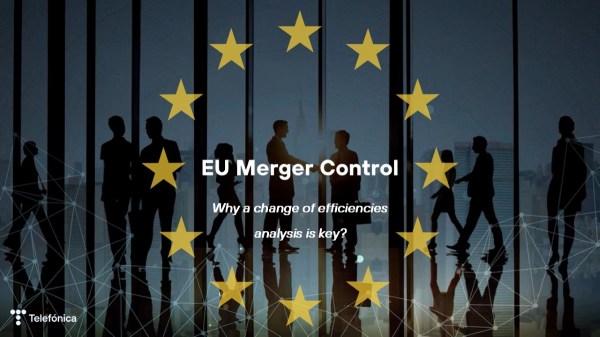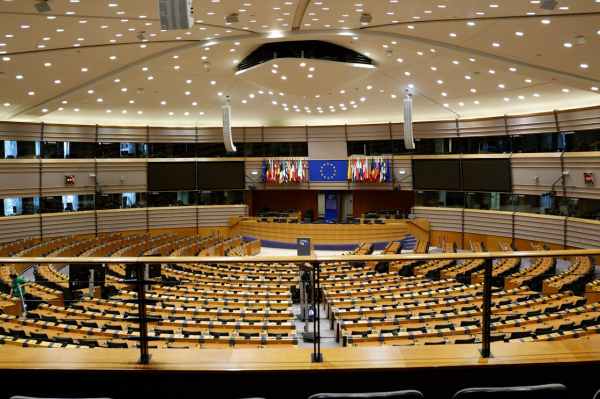León: A shared ambition for EU telecommunications
In fall 2023, the Spanish Council Presidency invited to an informal gathering among telecommunications ministers in León to discuss questions relating to the future of the electronic communications sector.
This invitation was remarkable for its clear emphasis on an aspect that seemed to have long since disappeared from the realm of telecommunications policy in the EU: the search for a strategic outlook for an industry that has evolved into the unavoidable base layer of contemporary economic, social and, for many people, personal life.
The discussion in León was therefore arguably long overdue. To recall, the Spanish Presidency asked delegates to consider (i) the continued appropriateness of sectoral regulatory and competition policy and (ii) how to promote investments in innovative, sustainable, resilient and secure digital networks that would assure the EU’s digital sovereignty and strategic autonomy.
Presenting the outcome of the informal exchanges among Member States, the host, Deputy Prime Minister Nadia Calvino, and Thierry Breton, Commissioner for the Internal Market, both stressed that the purpose of the meeting had been not to agree concrete initiatives, but a shared common vision for connectivity infrastructure in its role as the backbone of the European economy. In that regard, Member States did agree, DPM Calvino reported, on the importance of maintaining European leadership in the sector.
Discussions on the substantive aspects would be relayed to the issuance of a White Paper expected for publication during the Belgian Presidency in the first half of 2024. This was to include the aspects of financing and remuneration of networks that had already featured during the Commission’s exploratory consultation and attracted significant interest during the press conference itself.
For Europe’s connectivity, León thus was first and foremost an initiating spark: the path remained the goal, and the León Declaration was instead dedicated to the field of neurotechnology.
With the Commission having scheduled the promised White Paper for presentation four months after the León gathering, on 21 February 2024, the question of what to expect from that document commands unparalleled attention.
Connectivity: A strategic choice for the EU
The wider context in which the León discussions were set highlights both challenges and opportunities for the process ahead.
At the end of September, the European Commission had issued its first Digital Decade report on the unique policy programme that the EU legislature had agreed less than a year earlier. Regarding the state of digital infrastructure development, among which connectivity is the principal element, that report highlighted that the EU was still far from achieving its digital targets.

Earlier in October, the Heads of State and Government had met in Granada to initiate discussions on the future strategic agenda for Europe.
To build a strong, dynamic, competitive and cohesive Europe in a changing world, European leaders identified among the key priorities and actions a renewed commitment to a more cohesive, innovation-driven and interconnected Single Market. As stated in their Granada Declaration, this will require the EU to build a sufficient level of capacity to guarantee its economic and social welfare, including through digital and net-zero technologies.
The Commission’s call for collective action to shape the digital transition thus found reciprocal engagement at the level of the European Council.
On Friday, Member States approved the last dossier in the current legislative cycle directly dedicated to connectivity matters: the Gigabit Infrastructure Act, conceived to facilitate infrastructure deployment and, thus, achievement of the Digital Decade targets.
Heading into the electoral year that 2024 is for the EU, it must be clear that adoption of the Act does not mark completion of the EU reform agenda. Indeed, one year ahead of reviewing the 2018 version of the electronic communications rulebook, is the right moment to initiate a reframing within which that exercise can take place.
Reframing connectivity, as León intimated and Granada underlined, has to occur in a much larger than sectoral context. Arguably one of the major weaknesses of electronic communications policy discourse since liberalisation has been to restrain reflection to communications being another sector, when, in reality, that sector has become a vector of transformation for all of socio-economic life.
Reviewing the subject matters that Heads of State and Government are considering for inclusion in their next Strategic Agenda – resilience and competitiveness, energy, global engagement, security and defence, enlargement, migration –, makes this patently clear: connectivity constitutes a transversal element permeating each of them.
Therefore, the White Paper will require an approach that responds to this broader context by acknowledging the transformative impact as well as the changing nature of the industry.
The White Paper: Fire starter or firecracker?
The Commission’s 2023 exploratory consultation raised a wide range of questions concerning the state of the sector and its future development.
To achieve an internationally leading connectivity ecosystem supporting the European data and information space and boosting EU competitiveness, in line with the expectations articulated by ministers in León and reinforcing the Granada strategy process, the White Paper will have to address the following key aspects:
- Defining a clear, systemic policy vision for connectivity. Successful digitisation inevitably implies greater connectivity needs. As the key infrastructure for enabling active and actionable digitisation of business, public sector and civil society, connectivity requires a distinct policy vision that stresses and supports its role in relation and in distinction to the wider digital ecosystem.
- Converting connectivity’s elementary importance into a sustainable perspective. Connectivity boosts economic opportunity, facilitates participation, furthers environmental objectives, and connects people. To deliver its enabling potential, connectivity itself must be sustainable. The Commission needs to evolve thinking that acknowledges sustainability beyond regulatory interventions in retail business models and energy efficiency requirements.
- Incentivising initiative and accelerating connectivity transformation. The Commission has rightly recognised advanced connectivity as a critical technology area for Europe. The White Paper now has to identify a perspective that rewards initiatives driving connectivity leadership and innovation. This has to recognise that advanced connectivity requires important investments beyond physical infrastructure.
- Providing connectivity governance innovation. Today’s governance architecture of electronic communications is essentially still that of the 1990s. In a world in which connectivity has assumed transversal relevance, and intersections with other policy fields and demands multiply, it is time for a rethink. The White Paper should reflect the changing environment from a systemic viewpoint and explore options that can avoid legislative deadlock and promote connectivity leadership in collaboration with Member States. This should also include a reflection on extending governance to providers of functionally equivalent services.
Overall, the White Paper presents a unique opportunity to build on last year’s initial groundwork and create a new political impulse to underpin the EU’s connectivity leadership ambition through a set of regulatory, funding and general policy measures. This will be critical notably in view of the upcoming 2025 review of the European Electronic Communications Code.
To create renewed dynamism in EU electronic communications, the White Paper will have to shift its perspective beyond the EU’s traditional liberalisation approach. This implies taking financing and remuneration of connectivity seriously. Failure to do so may turn what looked like an entertaining rendition of a serious question into a horror movie. Or, worse, a documentary raising the obvious question why the EU compromised its security, resilience, integrity and quality of life when it still had the opportunity to act.
The White Paper can be a fire starter for private initiative and innovation. The Commission needs to aim high to carry the dynamic of its 2023 exploration forward into the next mandate and to inspire relevant Council conclusions. A firecracker will not only compromise the digital targets, but also Europe’s strategic autonomy.










